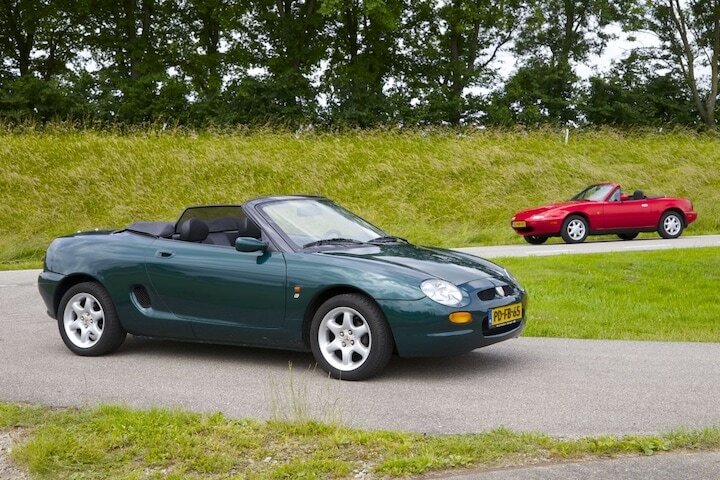
The “Top Year” section will look back 30 years to 1995 in 2025. 1995 has gone down in history as the year of legendary models such as the Alfa Romeo GTV, Peugeot 406, and BMW Z3. But the United Kingdom also has a say, with the open two-seater for true enthusiasts, the MG F.
What did the run-up look like?
MG had big shoes to fill with the introduction of the new F in the fall of 1995, because the British brand was once the largest sports car manufacturer in the world. This was thanks to the MG B, of which no fewer than 512,000 were built between 1962 and 1980. Imagine that. The MG B was a legendary two-seater that almost everyone knows. But that model simply did not have eternal life and was more or less reborn with the introduction of the RV8 in 1992. That was in fact an upgraded MG B with a thick 4-liter V8 at the front and only available with right-hand drive.
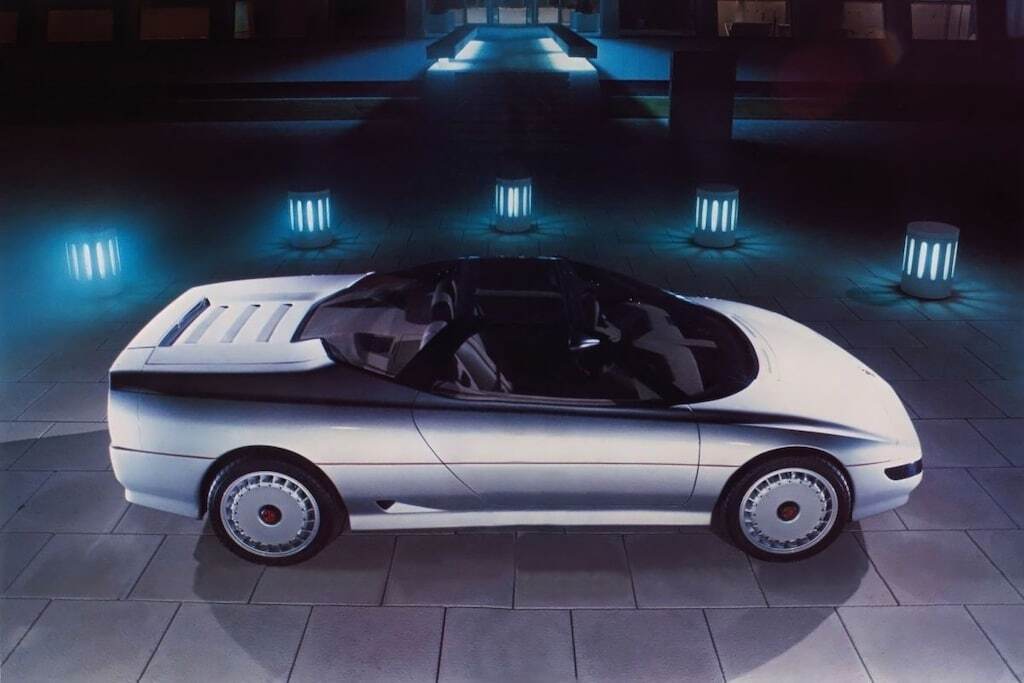
MG’s parent company Rover then made a courageous decision: we are bringing the best, also affordable sports car to the market and are pulling out all the stops for this. That was allowed, because MG had not really created anything new for 15 years, apart from sporty Austins such as the MGs Metro, Maestro and Montego in the 1980s. The prototype EX-E already announced the arrival of the MG F in 1985. Finally a completely new MG again, even though it did not finally come onto the market until ten years later.
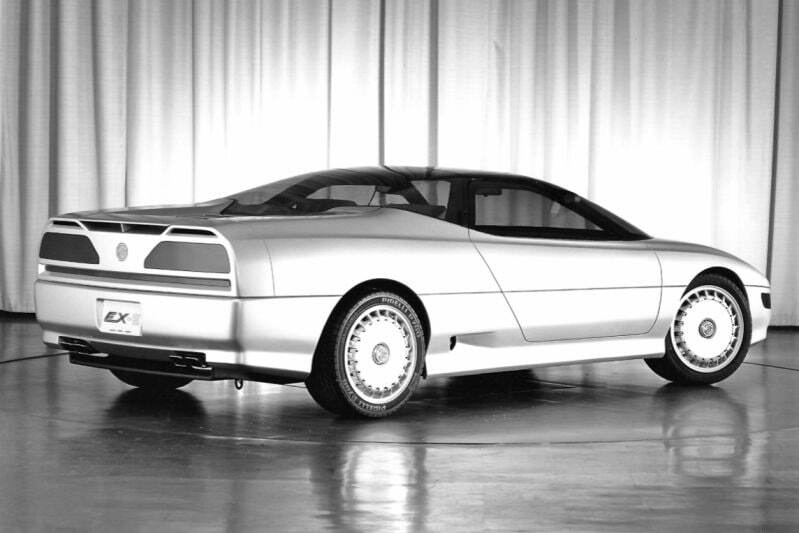
How was it received by the press and public?
Absolutely enthusiastic. Because the English have a heart for cars, a warm spot for real enthusiast cars and from ‘nothing’ MG launched an open two-seater with a mid-engine. That courage deserved a big compliment and the manufacturer received it. Everyone liked the MG F. The choice for a mid-engine was widely appreciated, the choice to use its own power sources (the so-called K-engines) instead of Honda powertrains also met with applause. So especially the fact that MG went all out for it immediately provided a huge positive vibe. The original Mazda MX-5, however well thought out, was mainly seen by the public as a reincarnation of the Lotus Elan, and the Fiat Barchetta was built on the basis of the ‘ordinary’ everyday Punto. The MG F, on the other hand, was completely itself.
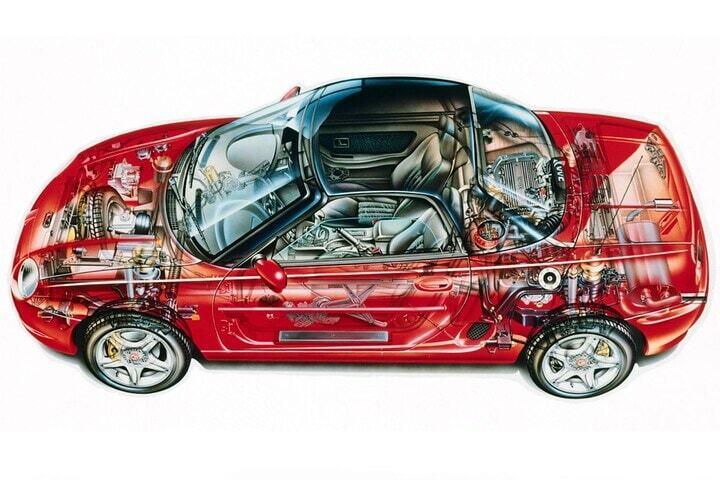
How revolutionary was it?
The MG F was not a revolution, but parent company Rover took it seriously at the time. To begin with, the roadster was equipped with a so-called mid-engine. The four-cylinder was transversely located in the middle, in front of the rear axle. This resulted in a very balanced weight distribution: 44 percent of the weight rests on the front wheels, 55 percent on the rear axle. That is an excellent basis for good road holding.
According to MG engineers, the choice for a mid-engine made it possible to construct an even stiffer body. Important, because of the absence of a roof. Only the SL from a famous car brand from Stuttgart had an even stiffer body, the MG spokespersons proudly reported at the time of the introduction. So mid-engine, rear-wheel drive and a super-stiff body, that resulted in a pleasantly playful car, extremely maneuverable and good on the road.
There was more: the MG F had electric power steering and it worked quite well. There were still plenty of gas springs (Hydragas) in the former Austin warehouses and the engineers cheerfully screwed them under the new MG F. That brilliant idea resulted in a slightly less rock-hard chassis. Unfortunately, we have never seen this suspension again afterwards. And many still find an MG F (too) hard sprung.
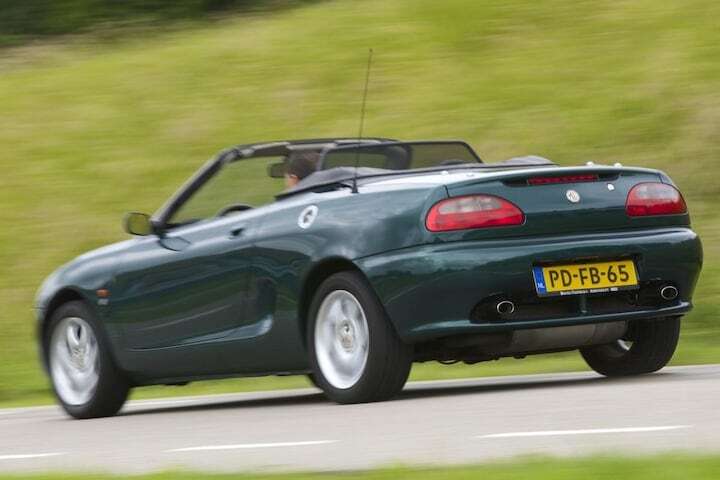
What were the choices at market introduction
At the end of 1995, consumers could choose from two engines. A 1.8i and a 1.8i VVC. The first is a four-cylinder sixteen-valve engine with 120 hp and 165 Nm. With a weight of 1,040 kilos, that power is sufficient, but no more than that. The basic version sprints from standstill to 100 km/h in nine seconds and its top speed is 193 km/h.
The 1.8i VVC is more aggressive with its 145 hp. It sprints to 100 km/h in 7.7 seconds and delivers a top speed of 212 km/h. The VVC engine has a Rover-patented variable valve timing system in which the rev counter eagerly climbs to 7,000. Could that have something to do with the long-standing collaboration between Rover and Honda? The K-engine from Rover was good and reliable in principle, and also suitable for tuning, but the head gasket broke all the time. ‘Has the head gasket been replaced yet?’ is therefore the first question you should ask with a used model.
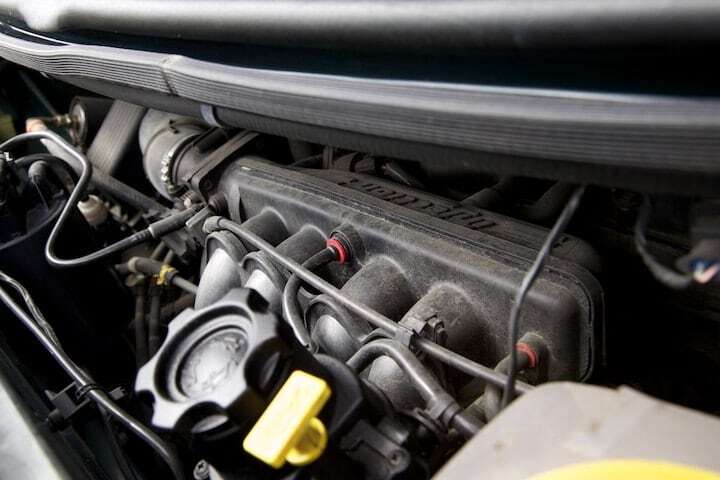
What were its competitors?
At the market introduction in the fall of 1995, the competitive field was clear, with the Fiat Barchetta, the Alfa Romeo Spider and of course that damn Mazda MX-5. But in that same year, Renault seemed to throw a spanner in the works and stir up the sports car segment with the launch of the Renault Sport Spider. An extreme case, also with a mid-engine, but also equipped with a plastic body and a tubular frame. In fact, it was a kind of racing car for the circuit, which meant that the Sport Spider was not a real competitor for the MG F. The same applied to the BMW Z3, which also appeared at the end of 1995, but operated higher up the market.
The comparative roadster test at the time was of course the direct confrontation between the MG TF, the Fiat Barchetta and the Mazda MX-5. The Japanese car undoubtedly emerged as the winner of the battle. The experience and performance of the MG were certainly fine, but the finish, operation, seating position and the stiff suspension cost him the victory. The Brit did stay ahead of the Fiat, but the Mazda was simply the best roadster in many respects. The Fiat still looks very good even now, but all in all offers much less roadster experience, partly due to its insensitive, light steering.
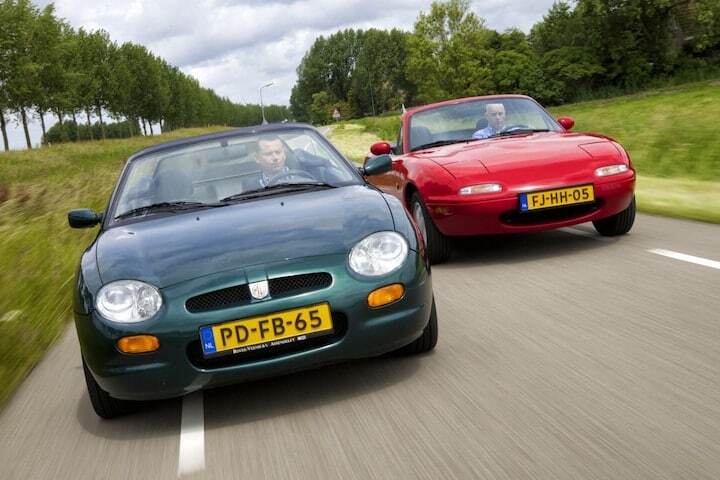
Any special features during its lifespan?
You bet. To begin with, two special versions were released during the MG F’s lifetime (from 1995 to 2002). The 1.8i Anniversary Edition appeared in 1999, which distinguished itself purely on external features. Two years later, the English presented the MG F Trophy 160 SE. It performed slightly better due to a tickled 1.8-liter K-engine; 160 hp and 174 Nm of torque resulted in a top speed of 220 km/h and a sprint from 0 to 100 km/h in 7 seconds.
The MG-F transformed into the MG-TF in 2002. That seems like a major facelift, but the step from F to TF was really considerable. We found the body of the F to be quite stiff at the time, but that of the TF was a lot stiffer. The wheel suspension was also significantly improved. The friendly round front was tightened somewhat and the tailgate was given a slightly sportier shape. He became a bit tougher and more serious and a little less sweet. The sports car remained virtually the same in terms of engine, although a 1.6-liter engine (115 hp) was added as an entry-level model to the range.
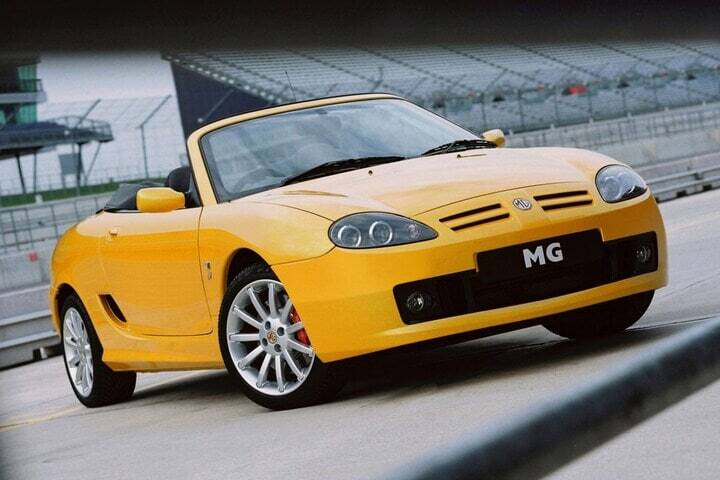
The MG TF then lasted until the bankruptcy of MG Rover in 2005. However, this did not definitively mark the end of the TF. The new Chinese owner of MG (Nanjing Motors) still saw interest in the small sports car in the market and resumed production in 2008, in the old factory in Longbridge. The reborn TF with right-hand drive was mainly assembled there, because all parts came from China. The left-hand drive MG TFs are also built there. The revival of the TF became a festive event in combination with the 57th MG International Race meeting at the Silverstone circuit. There, visitors saw that the roadster had been given an adapted nose with, among other things, a larger air inlet. Nanjing also made some improvements under the skin.
For a while there was talk of bringing the reborn TF to the Netherlands, but in 2011 the plug was permanently pulled.
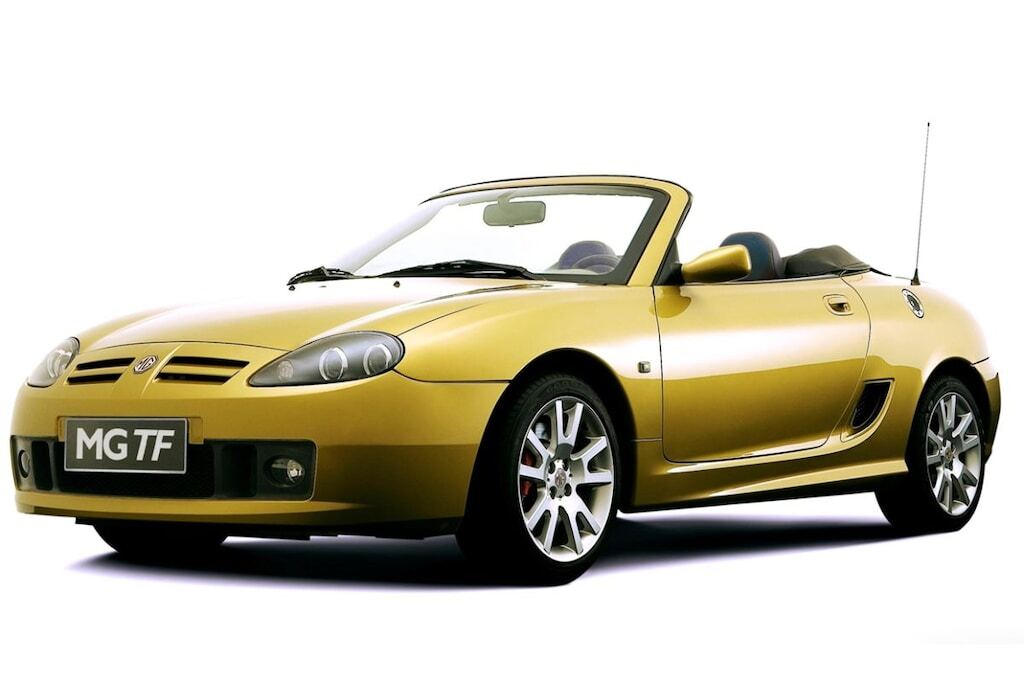
Which version is most appealing?
The MG TF 160 from 2002-2005 is in fact the model you should have. Manual gearbox, 160 hp from that 1.8-liter four-cylinder. So the strongest engine, because the chassis can absolutely handle that. A roadster does not necessarily have to have a lot of horsepower, but we find the 1.6-liter engine of 116 hp that also found a place in the MG TF a bit too tame.
A TF drives more mature and better than an F. For this reason alone, we would prefer the TF if we had our way. A TF 135 in the Brooklands version is, in our opinion, the best of the best. It has equipment that fits in well with its British origins. Leather upholstery and a wooden steering wheel (so gloves on!) are something we can appreciate. In addition, 16-inch alloy wheels, wood inlay (also on the dashboard) and an oil temperature meter. MG only released the Brooklands in 2004.
What has been the impact of the MG F?
Distinctive and ambitious and courageous. Those are the words we would like to associate with the MG F/TF phenomenon. Once again, the British showed that they are perfectly capable of developing a nice roadster. Fun to see and to drive. 853 MG Fs have been sold in our country (the best year was 1999, with 228 units), the registration counter for the MG TF in the Netherlands remains at 740 and 318 of these were sold in 2002. If you look at the prices for used models, the roadster does not attract halls full of enthusiasts. Although it is certainly attractive to drive, it does not push any boundaries in that area.
You also have to accept some peculiarities. Rattles and squeaks are not uncommon, however stiff its body is. Furthermore, it is cramped inside, the seats are just okay, the manual gearbox requires a firm fist and the interior finish is nothing to write home about. You also have to stay focused in heavy cornering, because if it breaks out, it really breaks out. It lacks refinement, but enthusiasts praise its originality.